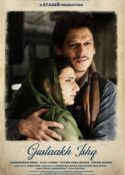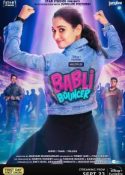 Kalyanji and his brother Anandji were known as hit makers during the 1960s, 70s and 80s when they ruled the charts with one evergreen song after another. The elder of the two , Kalyanji started his musical journey by playing an unusual musical instrument called the clavioline which sounded exactly like the been (the instrument used to animate snakes) for Hemant Kumar’s film Nagin.
Kalyanji and his brother Anandji were known as hit makers during the 1960s, 70s and 80s when they ruled the charts with one evergreen song after another. The elder of the two , Kalyanji started his musical journey by playing an unusual musical instrument called the clavioline which sounded exactly like the been (the instrument used to animate snakes) for Hemant Kumar’s film Nagin.
Explaining why a perfectionist like Hemant Kumar Mukherjee chose to fudge the sound of the been in the blockbuster film Nagin Kalyanji explained, “The actual been is not a very rangy instrument. It couldn’t create the versatile sound that Hemant Kumar wanted. I suggested the clavioline. When Hemantda heard the sound he immediately said yes. Luckily for us, my brother Anandji and I… Otherwise been bajaata bajaate hum has-been ho jaate. (otherwise our career would have gone nowhere)”
That was Kalyanji for you: full of jokes and quips. Lata Mangeshkar who sang many of Kalyanji-Anandji’s biggest hits like ‘Yeh samaa samaa hai yeh pyar ka’ (Jab Jab Phool Khile), ‘Ganga maiyya mein jab tak ke paani rahe’ (Suhaag Raat), ‘Ja re ja ho harjaee’ (Kalicharan), and ‘Kankariya maar ke jagaya’ (Himalay Ki God Mein), once told me, “When I recorded with Kalyanjibhai and Anandjibhai the mood used to be very light. Kalyanjibhai was a storehouse of jokes.”
I have to admit that Kalyanji-Anandji did their best work not only with Lataji but also Mukesh: ‘Koi jab tumhara hriday tod de’ (Purab Aur Paschim), ‘Waqt karta jo wafaa’ (Dil Ne Pukara), ‘Chanda sa badan’ (Saraswatichandra), ‘Dum dum diga diga’ (Bluff Master), ‘Chandi ki deewar na todi’ (Vishwas) and ‘Chand si mehbooba’ (Himalay Ki God Mein) are the crème de la crème of the Kalyanji-Anandjai oeuvre.
When I met Kalyanji way back in the 1980s he was very unhappy about the state of film music. “There is no melody left in the songs. We are given English songs and told to translate them into Hindi. We’ve worked with the greatest of filmmakers like Feroz Khan, Manoj Kumar and Prakash Mehra. There was a time when these three movie moghuls would not make a film without our music. Abhi bhi hamara rishta kamyaab hai (our relationship is still the same). Lekin aaj ka sangeet sangeet nahin raha (today’s music is no longer music).”
Kalyanji cribbed about the philistinism in the music world. “The young journalists who come to interview us have no jankaari (knowledge) of film music. They ask us, ‘Apne baare mein kuch batayen (tell us something about yourselves.’ Arrey bhai, kya batayen (what to say?).”
Kalyanji-Anandji churned out chartbusters for a good thirty years. They composed nearly 350 songs for Lataji until the late 1970s when Kalyanji began using new voices that imitated Lataji’s style, like Alka Yagnik and Sadhana Sargam. This affected not only the quality of their music but also their relationship with Lataji. In the 1980s Kalyanji-Anandji came up with only the occasion hit like ‘Mere angnein mein tumhara kya kaam hai’ (in Lawaaris) a folk tune from Uttar Pradesh that Kalyanji was given by Amitabh Bachchan.
Amitabh Bachchan very clearly credits his very popular live concerts abroad in the 1970s and 80s to Kalyanji and his brother Anandji. “If it wasn’t for them I would have never ventured into live performances. With Kalyanjibhai and Anandjibhai I travelled all over the world doing live concerts. They even encouraged me to sing on stage when I was never a singer.”
With Kalyanji’s death in the year 2000 Anandji lost the zest for creating music. The light had gone out of the duo’s life. The jokes had stopped. The songs were stilled.








